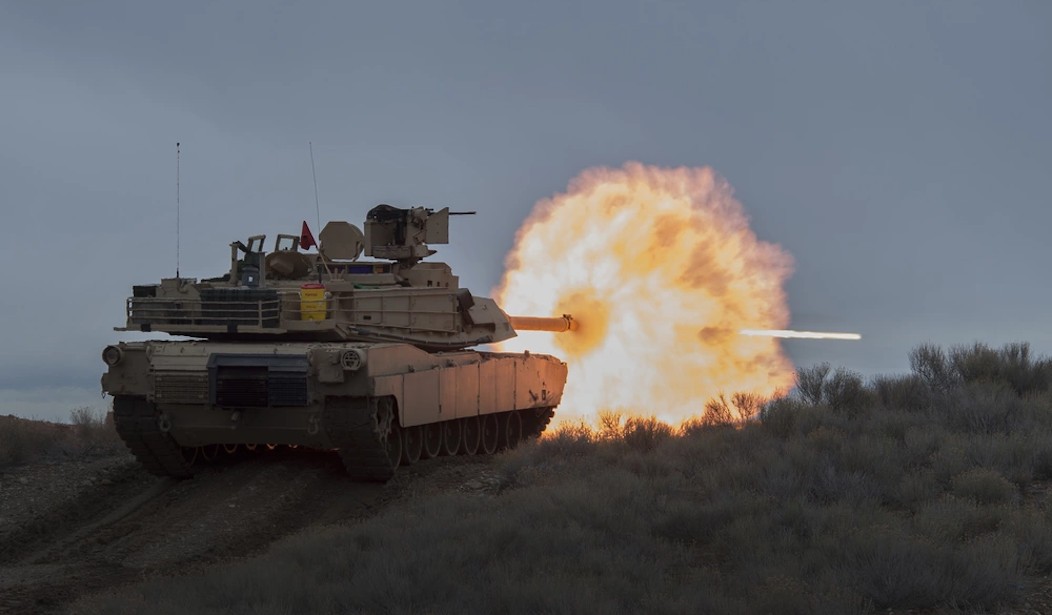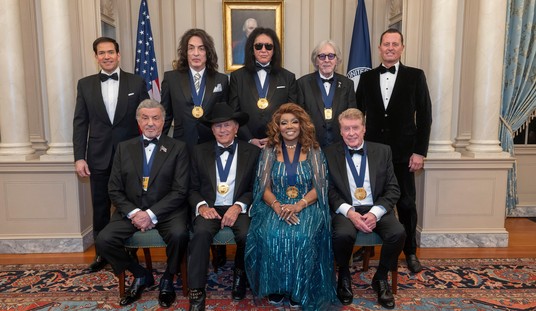The history of mankind has been the history of warfare. Whether we like it or not, warfare has always punctuated human societies. That's the unpleasant reality of human existence, and has been since the first primitive man chucked a rock at his neighbor. It's not something most of us hope for or want. The people who will have to go fight such a war are the ones most fervent in hopes for peace, but they also know that only preparation, readiness, and strength will guarantee that peace.
With that said, there's an old saying in military circles that we're always training to fight the last war. My own experience, however modest it was, can serve as an example; for years, my compatriots and I were trained for one primary mission, to fight the Soviet Union in Western Europe. That would have been a massive, near-peer conflict, a combined-arms slugfest between superpowers. Instead, when my turn came, it was to the desert of the Middle East, there to participate in the most one-sided military victory since Britain stomped into Abyssinia in 1868.
Now, though, the face of war is changing, and many of those changes are being fueled by the underdogs in their various campaigns, in places like Ukraine and Yemen. It's technology now that's making the difference, and there are a couple of arms companies that are trying to keep the United States on the leading edge of that wave - and producing some interesting stuff in the process.
When the Russian Army rolled into Ukraine, it was equipped for a conflict from an earlier era: an old-fashioned land war prosecuted by tanks and heavy artillery. In response, Ukraine devised a futuristic take on hit-and-run guerrilla operations. Now when a Russian column tries to advance it is met by a swarm of buzzing bombs. Russia has suffered about a million casualties in its attempt to invade. Since early 2024, according to an estimate by Mykhailo Samus, a researcher in Kyiv, about eighty per cent of its losses in men and matériel have been inflicted by drones.
The most dramatic application of this asymmetric approach came in June, when a fleet of more than a hundred Ukrainian drones struck targets as far away as Siberia, destroying or damaging some twenty Russian warplanes. It was the most militarily significant attack on Russia since the Second World War. The Ukrainians released a taunting video, in which first-person views of the drones careering into the planes were set to a pulsing techno soundtrack. The videos were stamped “Failsafe,” a military term that suggests immunity to harm.
The use of drones isn't new. Unmanned aerial vehicles, or UAVs, have been used for reconnaissance and for delivering payloads for some years now; more than one Islamic terrorist has been rendered into spare parts by a high-tech American Ginsu missile delivered by a Predator or Reaper drone. But the drone swarm, that's a more recent thing, and it's one that's already made Russia's Tsar Vladimir I grit his teeth a few times.
See Also: Can Trump Be the One to Finally Curb Russia's Putin?
Here in the United States, we're beginning to get ahead of this new technological curve ourselves.
America’s best approximation of (Ukrainian businessman and drone-maker) Oleksandr Yakovenko is Palmer Luckey, who helped found the defense startup Anduril in 2017. Not long ago, he met me at the company’s headquarters, in Costa Mesa, California, amid an array of high-tech weapons: drones, missiles, pilotless planes. Anduril is housed in a cavernous building that once contained the Orange County offices of the Los Angeles Times, whose faded logo is still visible on the exterior walls. At thirty-two, Luckey embodies the stereotype of a cocky, gnomic tech mogul: shorts and a Hawaiian shirt, flip-flops, a mullet and a soul patch. As we talked, he snacked from a bag of chocolate-chip cookies.
He wanted to show off his creations, autonomous weapons that he believes will upend many of the American military’s most cherished notions of strategy and defense. He walked over to a model of the Dive-XL, an unmanned submarine that can go a thousand miles without surfacing and is designed to be produced as quickly as an IKEA couch. “I can make one of these in a matter of days,” he said.
That could be an unmanned, autonomous weapon with enormous potential. And while the United States is right to be pushing the edge of high-tech warfare - our adversaries sure will be - where does it all end up? Drone swarms, unmanned aircraft, hypersonic missiles - what else? And Anduril is an interesting outfit. Their projects include a range of automated, autonomous systems for force protection, for air and undersea operations; this is the face of future warfare.
See Also: The New Face of War: Drone Swarms. Does the US Already Have an Ideal Platform?
One trend through history is that war has become, over the centuries, fought more and more at range. From clubs and slings, we saw advances in melee like the Greek Phalanx and the tight, disciplined ranks of the Roman legions. Then the first artillery: ballistae, onagers, and so on. The advent of gunpowder took artillery to the next level, and then even placed it in the hands of the individual soldiers in the form of arquebuses, muskets, and now, (actual) assault rifles. Armor, aircraft, and missiles have extended that trend towards warfare being fought at a distance.
When does the distance become so great that it starts to blind us to the cost?
Even so, the trend goes on, war will continue to become more and more high-tech, and the United States has to be on top of this. We can no longer afford to train for the last war, and count on the two great oceans to shelter us from our enemies while we learn how to adapt. The enemy, for one thing, may very well be here already, in amongst us. China, Russia, and Iran are doubtless making plans of their own, and not only agents-in-place (doubtless many of whom entered the United States during the Biden administration's non-enforcement of the borders) but also high-tech weapons like drone swarms are going to be part of those plans. The best hope for the United States is to make sure that China, Russia, and Iran know we are ahead of that curve. They must also know we are prepared to pay the price, if we must, to win.
Deterrence is good, and we should hope for it. But we must also remember George Santayana's caution: Only the dead have seen the end of war.














